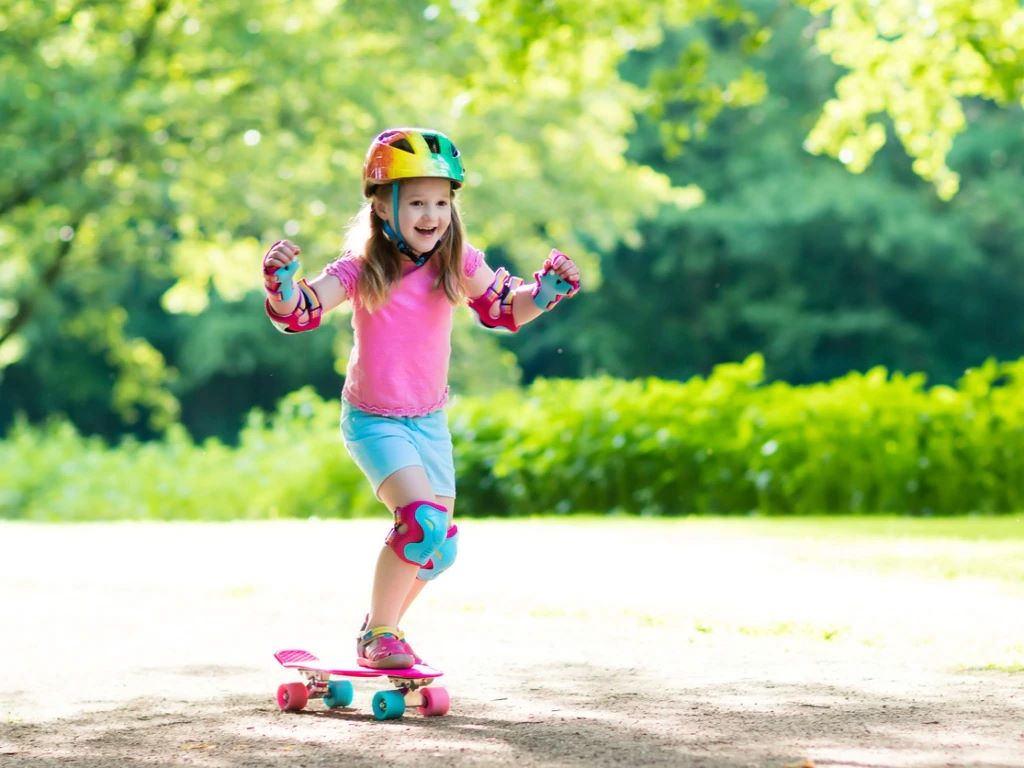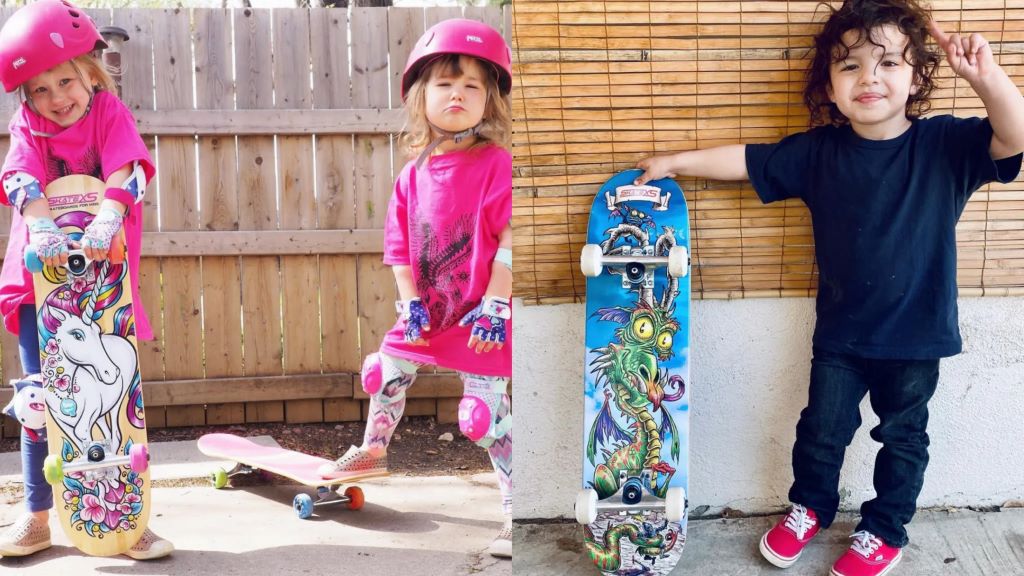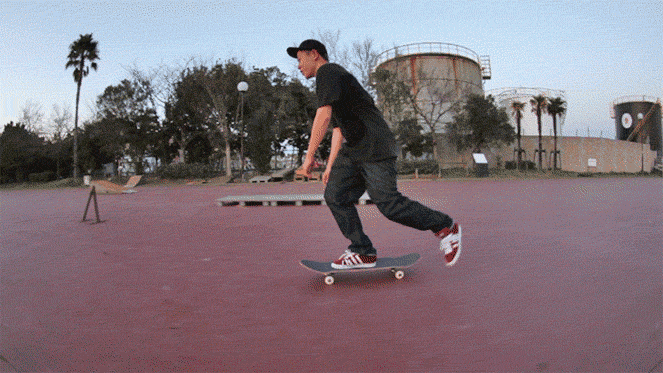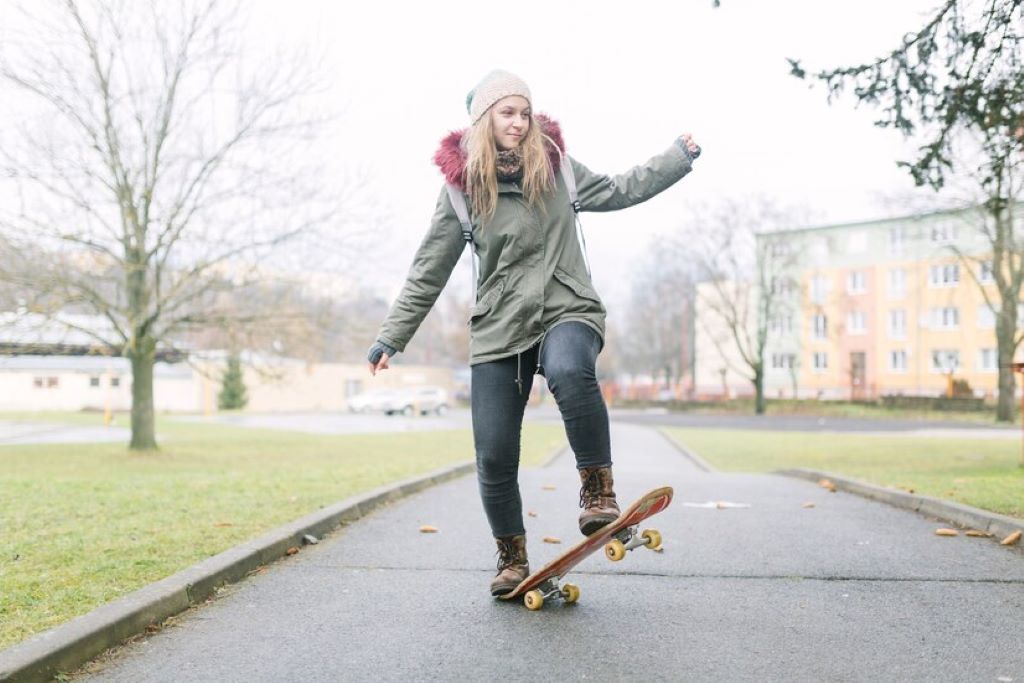Okay, so you want to buy a skateboard for a child? That’s awesome! Skateboarding is a super fun way for kids to get exercise, express themselves, and make new friends. But hold on! Before you rush out and grab the first board you see, let’s talk about how to pick the perfect one. It can be a bit tricky with so many options out there. Don’t worry, I’m here to help!
Picking the Right Skateboard: A Guide for Parents
Buying a skateboard for a child is kind of like buying them their first bike. It’s a big deal! You want to get something they’ll love and use. According to a study by the National Sporting Goods Association, skateboarding is one of the fastest-growing sports among kids. And guess what? It’s not just for boys anymore! More and more girls are shredding the gnar these days.
Why Should My Child Skateboard?
Think of skateboarding as more than just a hobby. It’s a fantastic way for your child to develop some really important skills. We’re talking about things like balance, coordination, and problem-solving. Ever seen a kid land a new trick after trying it over and over? That’s perseverance in action! Plus, skateboarding can boost their confidence and teach them about resilience. Falling is part of the learning process, and getting back up builds character.
What Size Skateboard Does My Child Need?
This is probably the most common question I get. And it’s a good one! Getting the right size skateboard is crucial. Think of it like shoes – you wouldn’t want your kid running around in shoes that are way too big or too small, right?
Here’s a simple breakdown:
- Ages 5 and under: Start with a mini-board. These are usually around 27.25″ – 28″ long and about 7″ wide. They’re lightweight and easier for little ones to handle.
- Ages 6-8: A mid-size board (around 7.5″ wide and 28″ – 30″ long) is a good choice. They offer a bit more stability as kids grow and progress.
- Ages 9 and up: Most kids this age can handle a standard-size skateboard (7.75″ – 8″ wide and around 31″ – 32″ long).
Of course, these are just general guidelines. You also want to consider your child’s height and shoe size. A good rule of thumb is to have them stand on the board. Their feet should be comfortably spaced, roughly shoulder-width apart, with a slight overhang on each side.
Complete Skateboard vs. Building One
Now, here’s where things get interesting. You have two main options:
- Complete Skateboard: This is a ready-to-roll skateboard that comes fully assembled. It’s the easiest option, especially for beginners. Think of it like buying a complete bicycle – just hop on and go!
- Building a Skateboard: This involves choosing each part individually – the deck, trucks, wheels, and bearings. It’s like building a custom bike from scratch. This allows for more customization but can be a bit overwhelming for first-timers.
For most kids starting, I recommend a complete skateboard. It’s simpler, more convenient, and usually more affordable. As they get more experienced and develop their preferences, they might want to explore building a custom board down the road.
What To Look For In a Complete Skateboard
Alright, so you’ve decided to go with a complete skateboard. Awesome! Now, what should you look for?
- Deck: The deck is the wooden board that you stand on. Look for a deck made of 7-ply maple. This is the industry standard and offers the best combination of durability and flexibility.
- Trucks: These are the metal axles that connect the wheels to the deck. They allow the skateboard to turn. Look for trucks that are made of aluminum and are the appropriate size for the deck.
- Wheels: Skateboard wheels come in different sizes and hardnesses. For beginners, I recommend wheels around 52-54mm in diameter with a durometer (hardness) of 99A. These are good all-around wheels that work well on most surfaces.
- Bearings: These are the little rings inside the wheels that allow them to spin. Look for ABEC-rated bearings. ABEC 5 or 7 bearings are a good choice for beginners.
Don’t worry too much about getting caught up in all the technical details. Most complete skateboards from reputable brands will have decent-quality components.
Where To Buy a Skateboard
You have a few options when it comes to buying a skateboard:
- Local Skate Shops: This is my top recommendation! Supporting your local skate shop is always a good idea. They usually have knowledgeable staff who can help you choose the right board and answer any questions you have. Plus, they often offer things like assembly and adjustments.
- Online Retailers: Websites like Amazon and Tactics offer a wide selection of skateboards at competitive prices. Just be sure to do your research and read reviews before making a purchase.
- Sporting Goods Stores: Big box stores like Dick’s Sporting Goods and Walmart also sell skateboards. However, their selection might be more limited, and the staff might not be as knowledgeable about skateboarding.
Safety First!
Before you let your child loose on their new skateboard, remember safety first! Always make sure they wear a helmet. It’s the most important piece of safety gear. Knee pads and elbow pads are also a good idea, especially for beginners.
Start by having them practice on a smooth, flat surface away from traffic. A driveway or empty parking lot is a good place to start. As they get more comfortable, they can gradually move on to other surfaces like skateparks.
Skateboarding is More Than Just a Sport

Remember, skateboarding is more than just a sport. It’s a culture, a community, and a form of self-expression. Encourage your child to have fun, be creative, and learn at their own pace. Who knows, maybe they’ll be the next Tony Hawk!
Let’s Talk About Brands
Okay, so we’ve covered the basics. Now, let’s dive into some specific brands. Here are a few popular and reputable brands to consider:
1. Element
Element is a well-known brand in the skateboarding world. They’re known for their high-quality decks with cool graphics. They also offer a good selection of complete skateboards for beginners. Think of Element as the “classic” choice.
2. Powell Peralta
Powell Peralta is another legendary skateboard brand. They’ve been around since the 70s and have a rich history in skateboarding. Their “Bones Brigade” team was iconic! They’re known for their durable decks and innovative designs.
3. Santa Cruz
Santa Cruz is famous for their screaming hand logo. You’ve probably seen it! They make great boards and have a wide variety of styles, from classic to modern.
4. Birdhouse
Birdhouse Skateboards was founded by pro skater Tony Hawk. Need I say more? They’re known for their team of talented riders and their fun, quirky graphics.
5. Girl Skateboards
Girl Skateboards are a popular choice for, you guessed it, girls! They have a team of amazing female skaters and offer boards with stylish designs. But hey, anyone can ride a Girl skateboard!
These are just a few of the many great skateboard brands out there. Don’t be afraid to explore and find one that resonates with your child’s style and personality.
A Few More Tips
- Consider the graphics: Let your child choose a deck with graphics they love. It’ll make them more excited to ride their skateboard.
- Don’t break the bank: You don’t need to spend a fortune on a beginner skateboard. There are plenty of affordable options that are great for learning.
- Get the right shoes: Skate shoes have flat soles and good grip, which are important for skateboarding. Regular sneakers won’t cut it!
- Be patient: Learning to skateboard takes time and practice. Encourage your child to keep trying and celebrate their progress.
- Have fun! Skateboarding should be enjoyable. Make it a fun activity that you can do together as a family.
What About Longboards?
You might be wondering about longboards. They’re longer and wider than regular skateboards and have larger, softer wheels. Longboards are great for cruising, carving, and downhill riding. They’re generally more stable than regular skateboards, which can make them a good option for beginners.
However, keep in mind that longboards are not as versatile as regular skateboards. They’re not ideal for tricks or skateparks. If your child is interested in learning tricks, a regular skateboard is the way to go.
Protective Gear: Don’t Skip It!
I can’t stress this enough: protective gear is essential! Even experienced skaters wear helmets. It’s just not worth the risk to skip it. A good helmet should fit snugly and cover the forehead.
Knee pads and elbow pads are also a good idea, especially for beginners. They can help prevent scrapes and bruises. Wrist guards can also be helpful, as wrist injuries are common in skateboarding.
Make sure the protective gear fits properly and is comfortable to wear. If it’s uncomfortable, your child will be less likely to wear it.
Learning to Skateboard
Once your child has their new skateboard and safety gear, it’s time to start learning! There are plenty of resources available to help them get started.
- Local skate shops: Many skate shops offer lessons for beginners. This can be a great way for your child to learn the basics in a safe and supportive environment.
- Online tutorials: YouTube is a treasure trove of skateboarding tutorials. You can find videos on everything from the basics to advanced tricks.
- Friends and family: If you know any skaters, ask them to help your child learn. Sometimes, learning from someone you know can be more fun and less intimidating.
Remember, learning to skateboard takes time and practice. Encourage your child to be patient and persistent. And most importantly, have fun!
More to Explore: The Craziest Skateboarding Tricks Ever Done: Defying Gravity and Blowing Minds
Skateboarding and Respect
Skateboarding has a bit of a rebellious reputation, but it’s important to teach your child about respect. Respect for others, respect for property, and respect for themselves.
- Respect for others: This means being mindful of other people when skateboarding. Don’t skate in crowded areas or cut people off. Be aware of your surroundings and be considerate of others.
- Respect for property: Don’t damage property while skateboarding. Stay off private property and avoid grinding on benches or rails. Stick to designated skateparks and areas.
- Respect for themselves: This means taking care of their body and not taking unnecessary risks. Wear safety gear, warm up properly, and know their limits.
You Might Enjoy: How to Conquer the Vert Ramp: A Beginner’s Guide
The Joy of Skateboarding
Skateboarding can be an incredibly rewarding experience for kids. It’s a great way to make friends, stay active, and express themselves. It can teach them valuable life lessons about perseverance, resilience, and creativity.
So, get out there and support your child’s skateboarding journey! Who knows, maybe you’ll even be inspired to give it a try yourself.
Conclusion
Choosing the right skateboard for your child doesn’t have to be overwhelming. Remember to consider their age, size, and interests. Prioritize safety by investing in a good helmet and other protective gear. Most importantly, encourage them to have fun and enjoy the ride!




